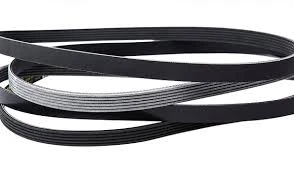- Arabic
- French
- Russian
- Spanish
- Portuguese
- Turkish
- Armenian
- English
- Albanian
- Amharic
- Azerbaijani
- Basque
- Belarusian
- Bengali
- Bosnian
- Bulgarian
- Catalan
- Cebuano
- Corsican
- Croatian
- Czech
- Danish
- Dutch
- Afrikaans
- Esperanto
- Estonian
- Finnish
- Frisian
- Galician
- Georgian
- German
- Greek
- Gujarati
- Haitian Creole
- hausa
- hawaiian
- Hebrew
- Hindi
- Miao
- Hungarian
- Icelandic
- igbo
- Indonesian
- irish
- Italian
- Japanese
- Javanese
- Kannada
- kazakh
- Khmer
- Rwandese
- Korean
- Kurdish
- Kyrgyz
- Lao
- Latin
- Latvian
- Lithuanian
- Luxembourgish
- Macedonian
- Malgashi
- Malay
- Malayalam
- Maltese
- Maori
- Marathi
- Mongolian
- Myanmar
- Nepali
- Norwegian
- Norwegian
- Occitan
- Pashto
- Persian
- Polish
- Punjabi
- Romanian
- Samoan
- Scottish Gaelic
- Serbian
- Sesotho
- Shona
- Sindhi
- Sinhala
- Slovak
- Slovenian
- Somali
- Sundanese
- Swahili
- Swedish
- Tagalog
- Tajik
- Tamil
- Tatar
- Telugu
- Thai
- Turkmen
- Ukrainian
- Urdu
- Uighur
- Uzbek
- Vietnamese
- Welsh
- Bantu
- Yiddish
- Yoruba
- Zulu
সেপ্টে. . 19, 2024 03:49 Back to list
timing belt timing chain
Timing Belts and Timing Chains Understanding Their Role in Engine Performance
When it comes to the intricate workings of an internal combustion engine, timing belts and timing chains play crucial roles in ensuring optimal performance. These components are integral to the synchronization of the engine's internal processes, particularly the timing of the engine's valves in relation to the rotation of the crankshaft. Understanding the differences between timing belts and timing chains can help vehicle owners make informed decisions regarding maintenance and repairs.
What is a Timing Belt?
A timing belt is a reinforced rubber belt that connects the crankshaft to the camshaft. Its primary function is to ensure that the camshaft rotates in tandem with the crankshaft. This synchronization is vital for the engine's operation, as it allows the valves to open and close at the right times during the engine's cycle, which consists of intake, compression, power, and exhaust strokes.
Timing belts are typically found in smaller, more compact engines and are popular in a variety of vehicles due to their lightweight and cost-effective design. However, they have a lifespan and usually need replacement every 60,000 to 100,000 miles, depending on the manufacturer's recommendations. Failing to replace a timing belt in time can lead to severe engine damage, often resulting in bent valves, damaged pistons, or even complete engine failure if the belt snaps while the engine is running.
What is a Timing Chain?
In contrast, a timing chain is a metal chain that serves the same purpose as a timing belt but is usually considered more durable and long-lasting. Timing chains are commonly found in larger engines and more powerful vehicles. The design of a timing chain allows for less stretch over time compared to belts, typically enabling them to last much longer, often exceeding 100,000 miles without needing replacement.
timing belt timing chain

Despite their longevity, timing chains are not without their complications. They are generally heavier than timing belts and can produce more engine noise due to their metal construction. In some cases, if a timing chain does stretch or if the chain tensioner fails, it can also lead to serious engine problems. Therefore, while timing chains require less frequent replacements, they still necessitate periodic inspections and maintenance to avoid premature wear and tear.
Choosing Between Timing Belt and Timing Chain
When it comes to choosing between vehicles equipped with timing belts or timing chains, several factors should be considered. Vehicles with timing belts often have lower manufacturing costs and are lighter, contributing to better fuel efficiency. On the other hand, those with timing chains may offer better reliability over the long term.
Regardless of which system is employed in a vehicle, regular maintenance is essential. Owners should adhere to the manufacturer's recommendations for inspection and replacement intervals. Neglecting these components can lead to costly repairs and significant downtime.
Conclusion
In summary, both timing belts and timing chains are vital for the smooth operation of an engine, ensuring that engine timing is precisely aligned. Understanding their differences, advantages, and maintenance needs empowers vehicle owners to make educated decisions about their cars. Keeping an eye on these components can safeguard against engine failures, ensuring longevity and performance for years to come.
-
Korean Auto Parts Timing Belt 24312-37500 For Hyundai/Kia
NewsMar.07,2025
-
7PK2300 90916-T2024 RIBBED BELT POLY V BELT PK BELT
NewsMar.07,2025
-
Chinese Auto Belt Factory 310-2M-22 For BMW/Mercedes-Benz
NewsMar.07,2025
-
Chinese Auto Belt Factory 310-2M-22 For BMW/Mercedes-Benz
NewsMar.07,2025
-
90916-02660 PK Belt 6PK1680 For Toyota
NewsMar.07,2025
-
drive belt serpentine belt
NewsMar.07,2025

